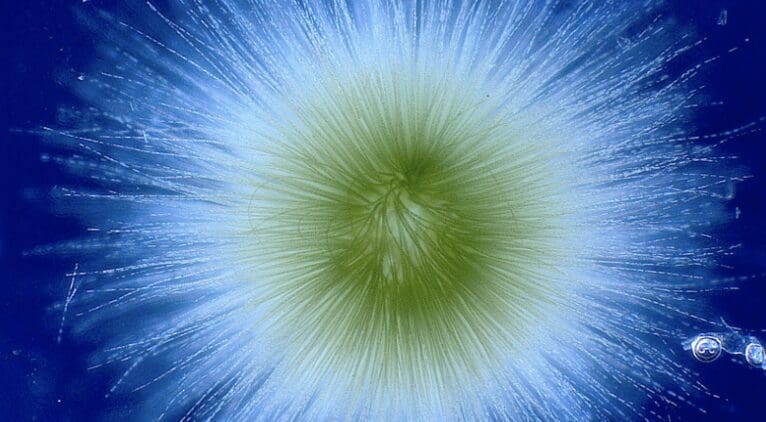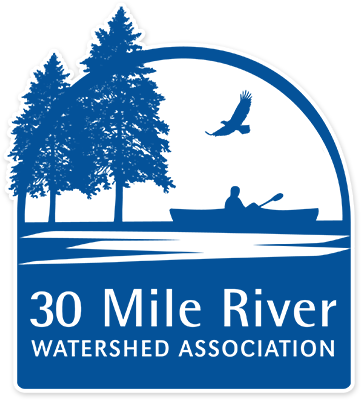Have you seen something that looks like tapioca floating in the lake? It is likely Gloeotrichia echinulata – a.k.a. “Gloeo” (pronounced “glee-oh”) – a type of cyanobacteria (blue-green algae) that lives suspended in lakes during the summer, sinks to the lakebed in a state of dormancy over the winter, then rises back up into the water column when the water warms in the spring. Unlike other bloom-forming cyanobacteria species that rely on nutrients in the water to fuel growth (like the bloom in Androscoggin Lake), Gloeo rely on lakebed sediments for their nutrient source. For this reason, reports of Gloeo blooms in pristine, low-nutrient lakes in the northeastern US, such as Parker Pond and Echo Lake, have been on the rise in recent years.
New research has suggested that Gloeo may play a role in declining water quality of otherwise healthy lakes and that Gloeo may be increasing nutrient levels and algae growth within these lakes by moving phosphorus from the sediments at the lake bottom up into the water column, where it can be used by other algae. Anecdotal data indicates an overall increase in Gloeo abundance in recent decades, with the effects of climate change potentially accelerating growth. 30 Mile and volunteer water quality monitors collect Gloeo data on all the lakes in our water quality program.

Photo (top right): A single Gloeotrichia colony magnified by a microscope, UMaine

Photo (bottom right): Lake Stewards of Maine
This article was included in 30 Mile’s September 2023 newsletter. To view the full newsletter, click here.
